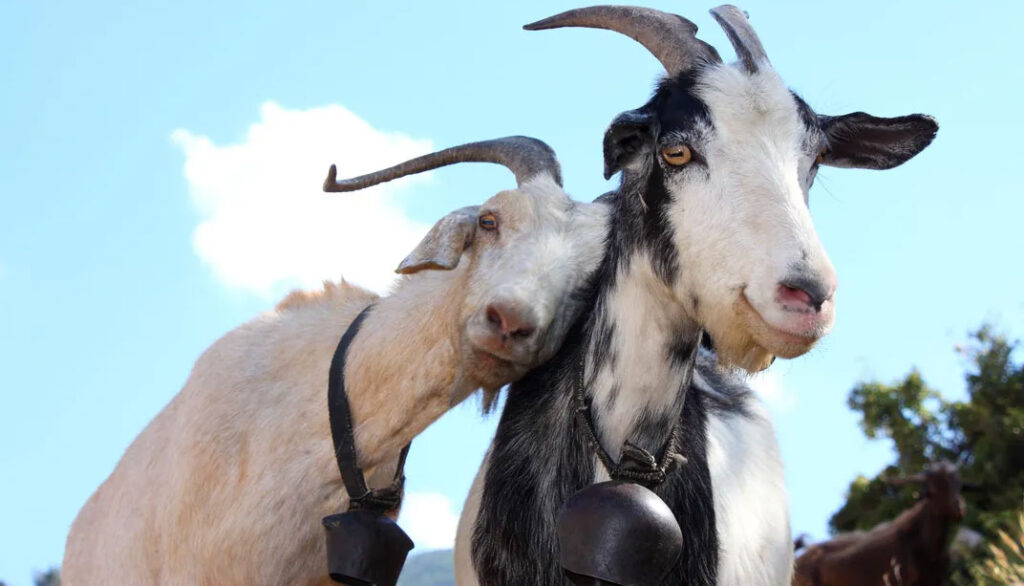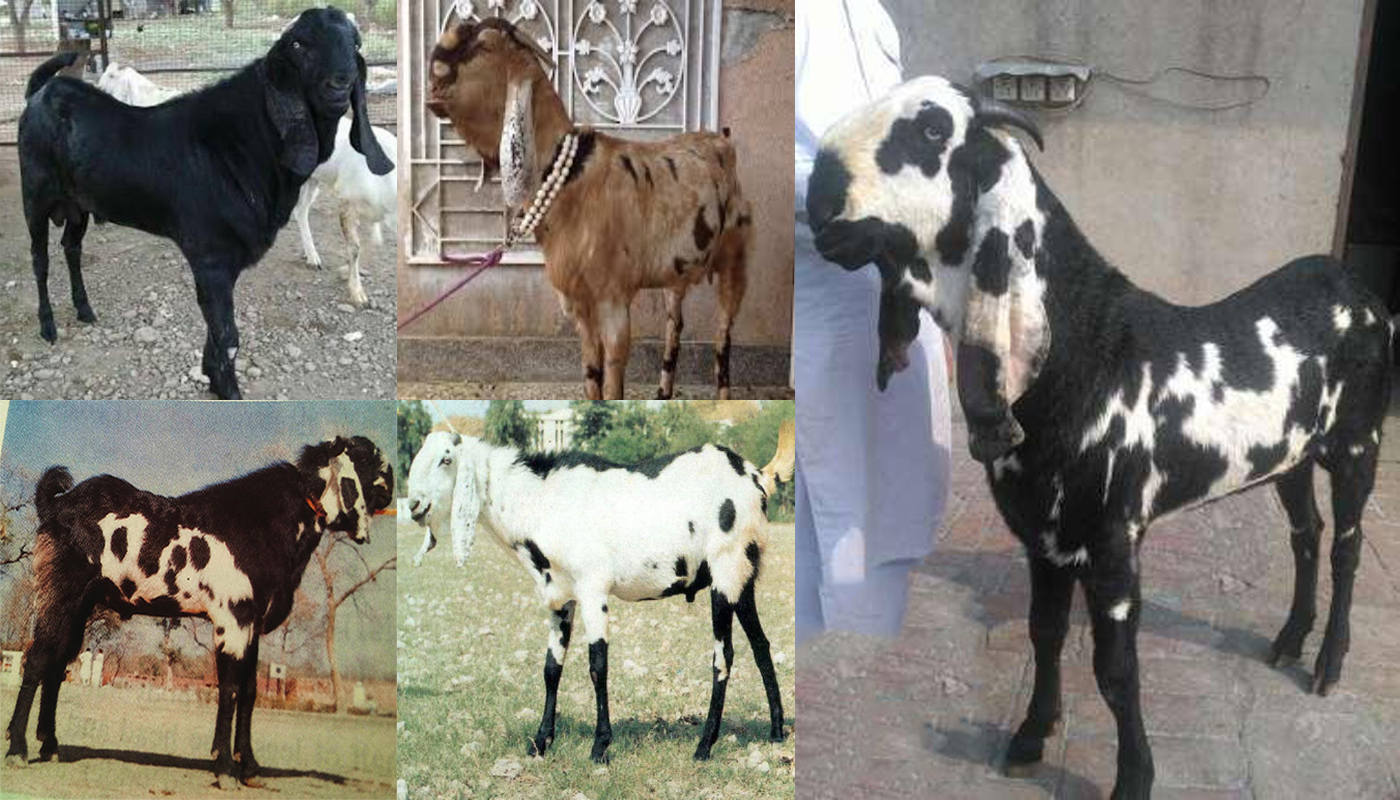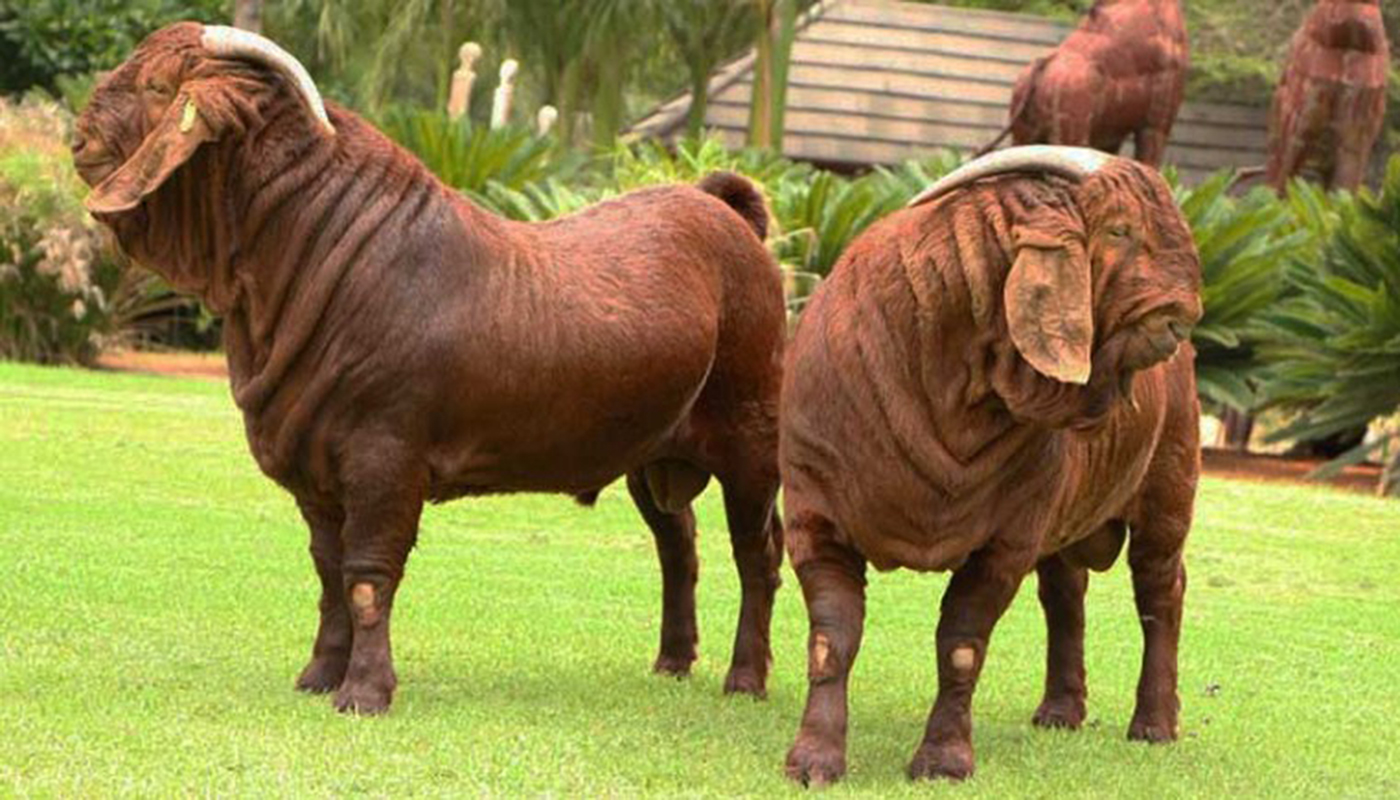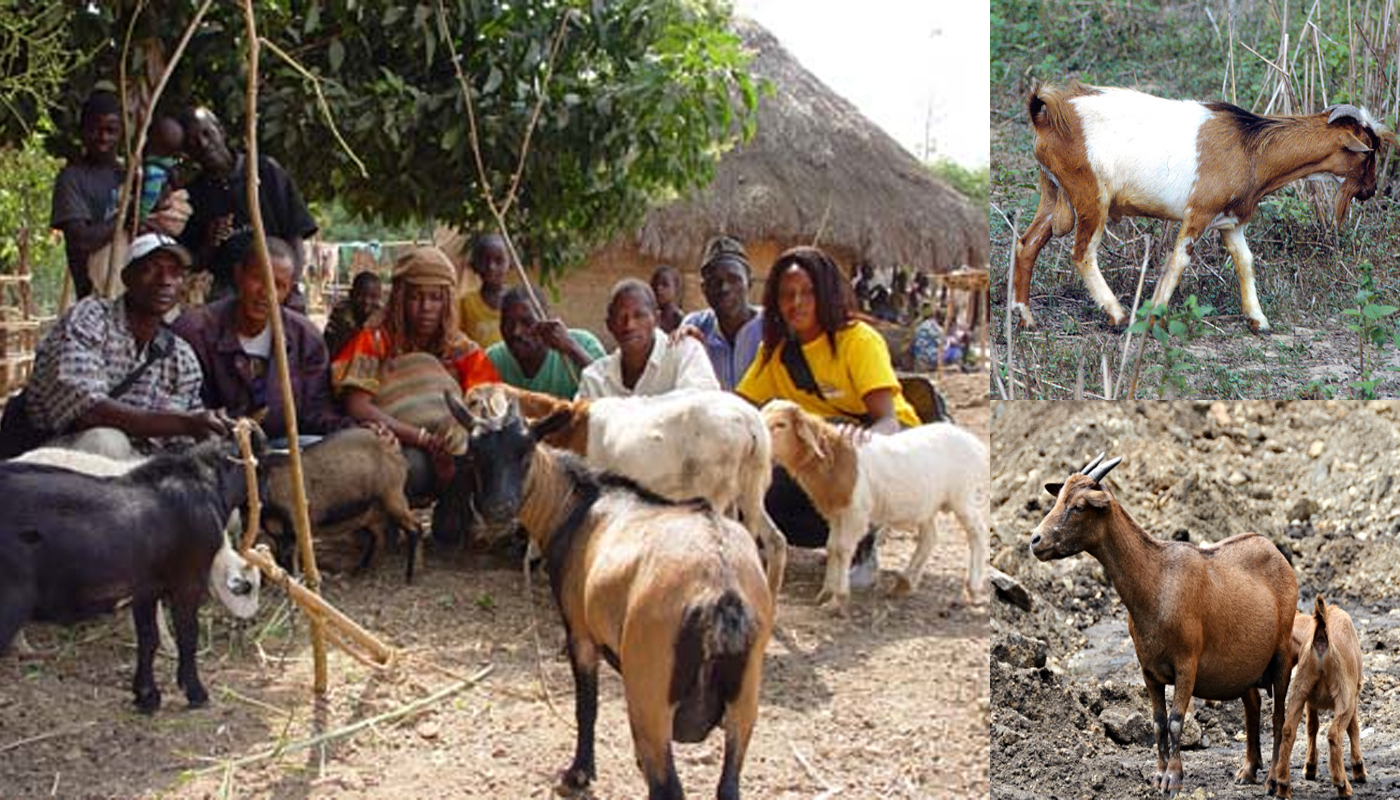
Owning goats can be a delightful experience, but it’s essential to understand their behavior to ensure their well-being and successful management. Goats are intelligent, social animals with unique personalities, and comprehending their behavior is key to fostering a harmonious relationship between owner and goat. Whether you’re a novice owner or a seasoned goat enthusiast, here’s a comprehensive guide to understanding goat behavior:
Social Nature:
Goats have a strong instinctual drive to form bonds and interact with other goats. In their natural habitat, they live in herds, which serve not only as a means of protection against predators but also as a source of companionship and support. Within these herds, goats establish hierarchies through various social interactions, including head-butting, pushing, and vocalizations.
As a goat owner, it’s essential to recognize the significance of companionship for your goats. Keeping them isolated or without adequate social interaction can lead to loneliness, stress, and even behavioral issues. Providing companionship means ensuring that goats have the opportunity to interact with other goats regularly.
If you’re keeping a single goat, it’s recommended to consider getting another goat to keep it company. However, introducing new goats to an existing herd requires careful planning and supervision to prevent conflicts and ensure a smooth integration process.
Additionally, providing ample space for goats to roam and engage in natural behaviors fosters social interaction and reduces boredom. Enrichment activities such as providing climbing structures, toys, and access to varied terrain can also promote social engagement among goats.
By prioritizing companionship and social interaction, goat owners can help fulfill their goats’ natural instincts and contribute to their overall well-being and happiness.
Curiosity and Playfulness:
Goats are incredibly curious and playful creatures by nature. Their insatiable curiosity drives them to explore their surroundings, investigate new objects, and engage in a variety of playful behaviors. Understanding and catering to their innate curiosity is essential for ensuring their mental stimulation and overall well-being.
One of the most enjoyable aspects of owning goats is observing their playful antics. Whether it’s leaping off rocks, balancing on logs, or engaging in friendly bouts of “king of the hill” with fellow herd members, goats never seem to tire of exploring and experimenting with their environment.
As responsible goat owners, it’s crucial to provide opportunities for goats to satisfy their curiosity and engage in playful activities. Enrichment activities play a vital role in fulfilling this need. Creating an environment that offers plenty of opportunities for exploration and play can help keep goats mentally stimulated and prevent boredom-related behaviors.
Here are some ideas for enrichment activities to keep your goats entertained:
- Climbing Structures: Goats love to climb! Providing sturdy structures such as platforms, stumps, and rocks allows goats to indulge in their natural climbing instincts.
- Toys: Simple toys such as balls, hanging ropes, and empty feed bags can provide hours of entertainment for goats. They enjoy batting, chewing, and tossing objects around, stimulating their minds and bodies.
- Varied Terrain: Offering access to varied terrain, such as hills, slopes, and rocky areas, allows goats to explore and navigate different landscapes, keeping them mentally and physically engaged.
- Foraging Challenges: Hide treats or feed in various locations around the pasture or inside enrichment devices to encourage natural foraging behaviors and problem-solving skills.
- Interaction with Other Animals: If possible, allow your goats to interact with other friendly animals, such as horses, dogs, or chickens. Socializing with different species can provide mental stimulation and enrich their social experiences.
By incorporating these enrichment activities into their daily routine, goat owners can help fulfill their goats’ natural instincts for exploration and play, leading to happier, healthier, and more contented animals. Remember to observe your goats closely to see which activities they enjoy most, and don’t forget to join in on the fun yourself!
Communication:
Communication is a fundamental aspect of goat behavior, and they employ a diverse array of vocalizations, body language, and scent marking to convey messages to each other and to their human caretakers.
Vocalizations: Bleating is the most recognizable form of vocal communication among goats. It can vary widely in pitch, duration, and intensity, serving various purposes such as expressing hunger, distress, or seeking attention. Mothers and their kids often use distinctive bleats to locate each other in crowded environments. Additionally, bucks may emit deep, guttural vocalizations during the breeding season to assert dominance or attract mates.
Body Language: Goats are adept at using body language to communicate their emotions and intentions. Erect ears typically indicate attentiveness or curiosity, while flattened ears may signal aggression or fear. Raised tails can signify excitement or anticipation, while a lowered tail may indicate submission or discomfort. Facial expressions, including the positioning of eyelids, lips, and nostrils, can also convey a range of emotions from contentment to agitation.
Scent Marking: Goats possess scent glands located around their head, feet, and tail region, which they use for scent marking. By rubbing their bodies against objects or urinating on the ground, goats leave behind pheromones that convey information about their identity, reproductive status, and territory boundaries. Scent marking plays a crucial role in establishing social hierarchies and maintaining group cohesion within a herd.
As a goat owner, paying attention to these forms of communication can help you better understand your goats’ needs and emotions. By interpreting their vocalizations, body language, and scent marking behaviors, you can respond appropriately to ensure their well-being and strengthen the bond between you and your goats. Additionally, providing a safe and enriching environment that allows goats to express themselves naturally will facilitate effective communication and foster a harmonious relationship between you and your goat companions.
Grazing and Foraging Behavior:
Grazing and foraging are fundamental behaviors for goats, as they are herbivores with a natural inclination to consume a varied diet of vegetation. Understanding their grazing and foraging behavior is crucial for ensuring their nutritional requirements are met and promoting their overall health and well-being.
Grazing Behavior: Goats are proficient grazers, meaning they prefer to consume grasses and other low-lying vegetation. They use their prehensile lips and agile tongues to select and consume preferred plant species while avoiding less palatable ones. Grazing behavior is not only essential for meeting their nutritional needs but also for maintaining healthy digestion and dental health.
Foraging Behavior: In addition to grazing, goats exhibit browsing behavior, which involves selectively feeding on leaves, twigs, shrubs, and other woody plants. This behavior allows goats to access a broader range of nutrients, including minerals and trace elements, that may not be available in grass alone. Browsing also provides mental stimulation and helps satisfy their natural instincts.
Diverse Diet Preferences: One of the remarkable characteristics of goats is their diverse diet preferences. They are known to be highly selective feeders, favoring certain plant species over others based on taste, texture, and nutritional content. Offering a variety of vegetation options, including pasture grasses, browse, hay, and supplemental feed, ensures that goats can meet their nutritional requirements and maintain optimal health.
Nutritional Needs: While goats are adaptable and can thrive on a variety of diets, it’s essential to provide balanced nutrition to support their growth, reproduction, and overall health. This includes ensuring access to high-quality forage, such as pasture and hay, as well as offering mineral supplements to address any deficiencies in their diet. Monitoring body condition and adjusting feeding strategies accordingly is crucial for meeting the specific nutritional needs of individual goats.
As a goat owner, providing access to ample pasture, browse, hay, and supplemental feed allows goats to exhibit their natural grazing and foraging behaviors while ensuring they receive the nutrients they need to thrive. Regularly monitoring their diet, observing their grazing habits, and making adjustments as necessary will help promote their health and well-being for years to come.
Territorial Behavior:
While goats are not typically regarded as highly territorial animals, they can exhibit territorial behaviors under certain circumstances, particularly during the breeding season or when resources are limited. Bucks, in particular, are known to display more pronounced territorial behaviors during rut, which is the mating season for goats.
During rut, male goats (bucks) undergo hormonal changes that result in increased aggression and territoriality as they compete for breeding opportunities with females (does). Bucks may engage in various territorial displays to establish dominance and assert their breeding rights. These displays can include vocalizations, such as loud calls or grunts, as well as physical behaviors like head-butting, mounting, and scent marking.
Territorial behavior in goats can also manifest when resources such as food, water, or shelter are scarce or limited. In such situations, goats may become more defensive of their access to resources, particularly if they perceive competition from other goats or animals.
As a goat owner, it’s essential to be aware of potential territorial behavior, especially during rut or when managing goats in confined spaces with limited resources. Providing adequate space, shelter, and resources can help minimize conflicts and reduce the likelihood of aggressive encounters between goats. Additionally, separating bucks from does during rut or providing separate areas for grazing and resting can help mitigate territorial disputes and ensure the safety and well-being of all animals in the herd.
Understanding and managing territorial behavior in goats requires careful observation, proactive management strategies, and a commitment to meeting the needs of each individual animal in the herd. By implementing effective management practices and promoting a harmonious social environment, goat owners can help minimize territorial conflicts and maintain a peaceful and productive herd dynamic.
Flight Response:
Understanding the flight response in goats is crucial for effective handling and management. As prey animals, goats have evolved a strong instinct to flee from potential threats in their environment. This flight response is a survival mechanism that helps them evade predators and stay out of harm’s way.
Goats are naturally alert and vigilant creatures, constantly scanning their surroundings for signs of danger. They are particularly sensitive to sudden movements, loud noises, and unfamiliar objects or individuals. When faced with a perceived threat, goats may exhibit behaviors such as freezing in place, taking flight, or seeking refuge in a secure location.
As a goat owner, it’s essential to recognize and respect their innate flight response. Approaching goats calmly, slowly, and predictably can help build trust and reduce stress levels. Sudden movements or loud noises can startle goats and trigger their flight response, potentially leading to accidents or injuries.
Here are some tips for minimizing the flight response in goats:
- Approach Slowly: When interacting with goats, approach them slowly and deliberately. Avoid sudden movements or loud noises that may startle them.
- Use Gentle Handling: Handle goats gently and with care, avoiding rough or aggressive handling that could cause fear or stress.
- Provide Positive Reinforcement: Use positive reinforcement techniques, such as treats or rewards, to encourage desired behaviors and help goats associate human interaction with positive experiences.
- Create a Calm Environment: Maintain a calm and quiet environment around goats, minimizing sources of stress or disturbance that could trigger their flight response.
- Build Trust: Spend time building trust with your goats through regular, gentle handling and positive interactions. Consistency and patience are key to establishing a bond based on trust and mutual respect.
By understanding and respecting the flight response in goats, owners can create a safe and comfortable environment for their animals. Building trust and fostering positive interactions can help minimize stress and anxiety, allowing goats to thrive in their surroundings.
Maternal Instincts:
maternal instincts are a powerful force in female goats (does), driving them to exhibit remarkable care and devotion to their offspring (kids). From pregnancy to birth and beyond, does demonstrate a range of behaviors that showcase their strong maternal instincts.
During pregnancy, does often exhibit nesting behavior, seeking out secluded and safe locations to give birth. They may become more selective about their surroundings and may display signs of restlessness or nesting behavior as the time for kidding approaches.
Once the kids are born, does typically demonstrate an immediate bond with their offspring. They will lick and clean the newborns, encouraging them to stand and nurse. Does are highly attentive mothers, closely monitoring their kids’ behavior and providing them with warmth, protection, and nourishment.
One of the most striking aspects of maternal behavior in goats is the does’ instinct to protect their young. They may become fiercely protective and assertive when they perceive a threat to their offspring. This protective behavior can manifest in various ways, including vocalizations, physical defense, and standing between the kids and perceived dangers.
In addition to protection, does also play a crucial role in teaching their kids essential survival skills. They guide them in foraging for food, navigating their environment, and interacting with other members of the herd. This maternal guidance is instrumental in helping kids develop into healthy and well-adjusted goats.
As a goat owner, it’s essential to respect and support the maternal instincts of does. Providing them with a safe and stress-free environment during pregnancy and kidding, as well as ample space and resources to care for their offspring, is crucial. Additionally, allowing does to raise their kids naturally within the herd helps foster strong maternal bonds and promotes the overall well-being of both the does and their offspring.
By recognizing and honoring the maternal instincts of does, goat owners can contribute to the health and happiness of their herd while fostering a deeper understanding and appreciation for these remarkable animals.
Herd Dynamics:
Herd dynamics play a significant role in the social structure and well-being of a group of goats. Understanding and managing these dynamics is crucial for maintaining harmony within the herd and ensuring the overall welfare of all members, whether they are long-time residents or newcomers.
When introducing new goats to an existing herd, it’s essential to approach the process with care and consideration. Here are some key considerations for successful integration:
- Quarantine and Health Checks: Before introducing new goats to the herd, it’s important to quarantine them for a period of time to prevent the spread of diseases. Conducting health checks and vaccinations can also help ensure the well-being of both the existing herd and the newcomers.
- Gradual Introduction: Introduce new goats to the herd gradually, allowing them to become familiar with each other’s presence before full integration. This can be done by initially keeping the new goats in adjacent pens or pastures where they can see and smell each other without direct contact.
- Supervised Interaction: Monitor the interactions between the new goats and the existing herd closely during the introduction process. Intervene if necessary to prevent aggression or bullying and ensure the safety of all animals involved.
- Establishing Hierarchy: Goats have a natural tendency to establish social hierarchies within the herd, often through dominance displays and interactions such as head-butting. Allow the goats to establish their hierarchy through these natural behaviors, but be prepared to intervene if conflicts escalate or if certain individuals are being consistently targeted.
- Providing Adequate Space and Resources: Ensure that the herd has access to ample space, shelter, and resources such as food and water to minimize competition and reduce the likelihood of conflicts. Providing multiple feeding and watering stations can help prevent resource guarding and allow all goats to access essential resources.
- Monitoring and Adjustment: Continuously monitor the herd dynamics, especially in the days and weeks following the introduction of new goats. Be prepared to make adjustments to the herd management plan as needed to address any conflicts or issues that arise.
By understanding herd dynamics and following careful integration protocols, goat owners can help ensure a smooth transition for new goats and maintain a peaceful coexistence within the herd. Building a cohesive and well-balanced herd dynamic contributes to the overall health, happiness, and productivity of all goats involved.
Training and Bonding:
Goats are remarkably intelligent and trainable animals, capable of forming strong bonds with their human caretakers. Training not only facilitates communication and cooperation but also strengthens the bond between goats and their owners. Positive reinforcement techniques are particularly effective in teaching goats desired behaviors while fostering a positive relationship based on trust and mutual respect.
Clicker Training: Clicker training is a popular and effective method for teaching goats new behaviors. It involves using a small handheld device called a clicker, which makes a distinct clicking sound, paired with rewards such as treats or praise. The clicker serves as a precise marker to indicate the exact moment the goat performs the desired behavior, making the training process clear and efficient.
Rewards: Rewards play a crucial role in positive reinforcement training. Goats are highly food-motivated animals, making treats such as grain, fruits, or vegetables excellent incentives for learning new behaviors. Offering rewards immediately after the desired behavior reinforces the association between the behavior and the reward, increasing the likelihood of the behavior being repeated in the future.
Consistency and Patience: Consistency and patience are key when training goats. Establishing clear cues and expectations, and consistently rewarding desired behaviors helps goats understand what is expected of them. Patience is also essential, as goats may require time to learn and master new skills. By maintaining a positive and supportive training environment, owners can help goats feel confident and motivated to participate in training sessions.
Bonding: Training provides an excellent opportunity for goats and their owners to bond and strengthen their relationship. Spending quality time together, engaging in training activities, and providing positive reinforcement create positive associations and build trust between goats and their owners. The bond formed through training can enhance communication, cooperation, and mutual understanding, enriching the lives of both goats and their caretakers.
By incorporating positive reinforcement techniques into training sessions, goat owners can unlock their goats’ potential and cultivate a rewarding partnership based on trust, cooperation, and mutual respect. Training not only enhances goats’ skills and abilities but also deepens the bond between goats and their human companions, creating a fulfilling and enriching experience for both parties.
By gaining insight into the behavior of goats, owners can provide appropriate care, enrichment, and training to ensure their goats lead happy and fulfilling lives. Remember, every goat is unique, so patience, observation, and empathy are essential elements of successful goat ownership.
 Golden Guernsey Goat Breed – Everything You Need to Know
Golden Guernsey Goat Breed – Everything You Need to Know Beetal Goat Breed – Everything You Need to Know
Beetal Goat Breed – Everything You Need to Know Kalahari Goat Breed – Everything You Need to Know
Kalahari Goat Breed – Everything You Need to Know Jonica Goat Breed – Everything You Need to Know
Jonica Goat Breed – Everything You Need to Know A Beginner’s Guide to Choosing the Right Goat Breed for Your Farm
A Beginner’s Guide to Choosing the Right Goat Breed for Your Farm Appenzell Goat Breed – Everything You Need to Know
Appenzell Goat Breed – Everything You Need to Know West African Dwarf Goat Breed – Everything You Need to Know
West African Dwarf Goat Breed – Everything You Need to Know Black Bengal Goat Breed – Everything You Need to Know
Black Bengal Goat Breed – Everything You Need to Know British Alpine Goat Breed – Everything You Need to Know
British Alpine Goat Breed – Everything You Need to Know Changthangi Goat Breed – Everything You Need to Know
Changthangi Goat Breed – Everything You Need to Know Nigerian Dwarf Goat Breed – Everything You Need to Know
Nigerian Dwarf Goat Breed – Everything You Need to Know Danish Landrace Goat Breed – Everything You Need to Know
Danish Landrace Goat Breed – Everything You Need to Know